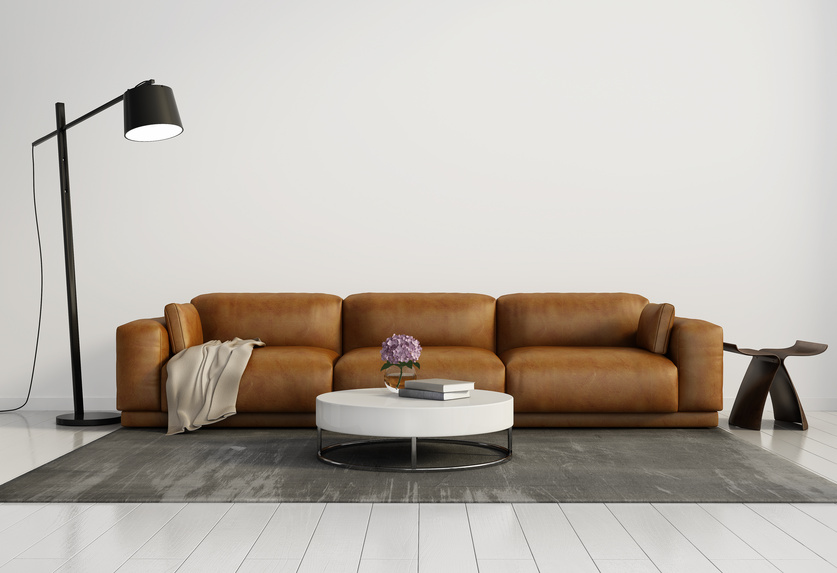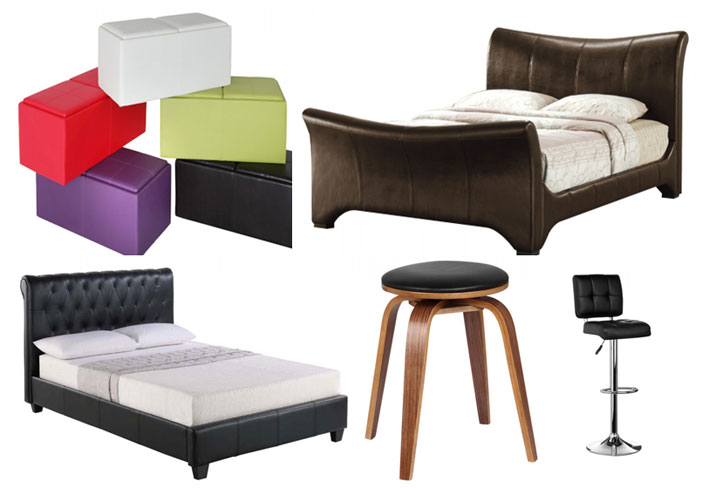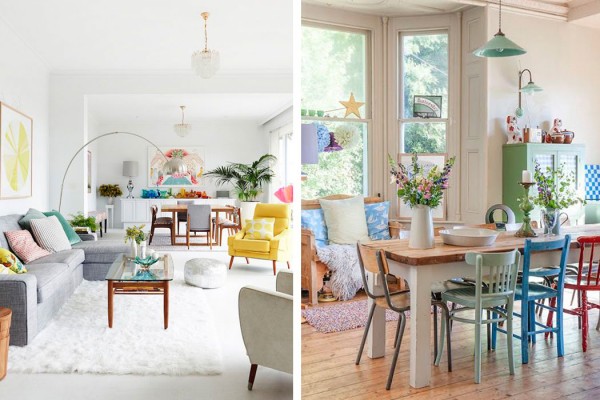If you’re looking to buy a new sofa or bed and you want a long-lasting, durable finish, leather is an excellent choice of material.
However, not all leather is equal and many of the bargain price leather deals you see on offer in the furniture stores are achieved because the quality of materials used is poor. Cheap leather won’t last as long and doesn’t offer good value for money. You’ll end up having to replace your furniture faster than if you bought a non-leather alternative.
The best advice is, therefore, either invest in quality leather or don’t opt for leather at all, unless you’re happy with the quality and durability that real leather alternatives have to offer.
Different types of ‘leather’
The word ‘leather’ is used rather loosely these days and doesn’t always mean what you might think.
Bonded and bycast leather
Bonded leather is made using the unwanted scraps of leather that are left over from cutting up the hide, which are ground up and meshed together with polyurethane. It only needs to contain a minimum of 17% leather and therefore is essentially plastic. As a result, it doesn’t wear well with age and doesn’t adjust to your body temperature like the real deal.
Bycast leather is made from a lower layer taken from the hide that is unsuitable for use, often because it is flawed or too thin. This is then sealed with polyurethane and so, like bonded leather, sitting on a sofa or armchair covered in bycast leather is just like sitting on plastic. It doesn’t acclimatise to your body temperature and won’t look better with age like real leather does.
Bonded and bycast leather are not without their place. If your budget won’t stretch to real leather but you don’t want to go faux, they have the benefit of being wipe-clean and are a good choice of material for family homes. Bycast leather also has the benefit of looking like real leather, without the hefty price tag.
Split
A split is just a lower layer taken from the hide as above, but it hasn’t been covered in polyurethane. It is therefore 100% real leather but doesn’t have the same beauty as the best layers from the hide (called the top-grain). The top grain, by contrast, has natural variations in the colour and a rich, smooth and soft feel to it. Split leather is also far less durable than real leather and no good for a family environment where durability is a must.
Leather match
Leather match furniture utilises real leather but only in the areas that you touch – for example, the sofa arms, seats and back cushions. The rest of the furnishing is covered with a non-leather material which may be bonded or bycast leather. Some use top-grain on the areas that you touch and split everywhere else, which allows them to still market the product as 100% leather.
Leather match has its benefits – you get the feel of real leather where it counts, and it is therefore an economical alternative to something covered with 100% top-grain. The downside is that, as the leather fades over time, you will notice the difference between the top-grain and split. This difference will be even more prominent if some other material is used rather than split.
Faux leather
Faux leather is, of course, not leather at all – so like the other imitations, it doesn’t improve with age and isn’t breathable. However, it’s the cheapest option and you can wipe it down. Faux leather is usually PVC or some material that begins with ‘poly’ – often polyurethane and polyamide microfibre. The poly materials are the better choice of the two, as they are friendlier to the environment, more breathable and easier to clean than PVC. As well as gravitating towards poly faux leather, look out for other, newer alternatives including Swedish koskinn, cork leather and ocean leather which are all worth considering if real leather is not an option.
Real leather
Real top-grain leather has many benefits. It is made up of around 12 to 14% water and this water content allows the leather to acclimatise well to your body temperature. If you’ve always thought of leather as a rather sweaty material, it’s likely your experience has been with some leather alternative like bonded leather. Real top-grain leather ‘breathes’ and so you don’t get the sweaty feel – split by contrast doesn’t have this quality. Real leather is also long lasting and in the right environment, its beauty increases with age.
Dyes and pigments
Furniture that have been upholstered with real leather are either coloured with dye only, or with dye and pigment. If your leather bed or armchair has been coloured with dye only, it is classed as ‘untreated’. Leather coloured with both dye and pigment are classes as finished.
Leather that has been dyed only has no coating. It tends to be the most expensive leather as only the best hides are treated this way, and it is both soft to touch and beautiful to look at. However, it does stain easily so it isn’t the best choice if you have children. Dyed leather also fades more rapidly in sunlight so it’s only a good choice if you can place it away from the light.
Finished leather by contrast is put through an additional colouring process and a chemically engineered finish is applied. The coating is specifically designed for the leather and allows it to breathe whilst protecting it from stains and spills. It also fades less quickly. A piece of furniture made from real finished leather is a better choice if you have children and need a durable surface, or if it is going in a sunny room.
Our Favourite Faux Leather Furnishings
We’ve got a selection of great faux leather furniture – here’s a pick of our favourites.
Top left: Ottoman Storage Boxes
Top right: Coral Brown Faux Leather Bed
Bottom left: Amalfi Black Buttoned Bed
Middle left: Prime Faux Leather and Wooden Stool
Middle right: James Pair of Buttoned Bar Stools




